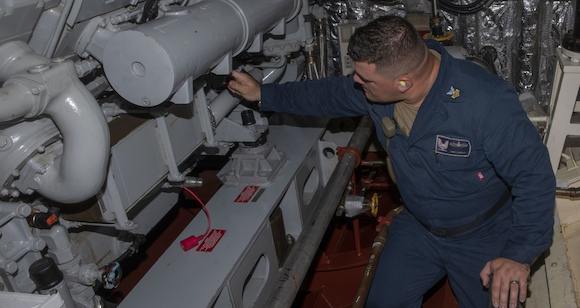US Navy develops Additive Manufacturing business case model
September 22, 2022

US Naval Supply Systems Command Weapon Systems Support (NAVSUP WSS) Navy Price Fighters (NPF) developed the web-based Additive Manufacturing Cost and Time (AMCAT) tool to help determine the technology’s return on investment by comparing the details of individual use cases in order to determine the suitability of additive versus traditional manufacturing.
In late 2016, the NPF was tasked to develop a business case for Additive Manufacturing. They reviewed numerous articles, industry publications and US Department of Defence guidance regarding the technology, but discovered there wasn’t a consistent path for determining a business case for the technology.
“Even though AM has been around for a while, it’s still relatively new for the Department of Defense and the Navy,” stated William Peterson, NAVSUP WSS NPF Operations Research Analyst and AMCAT Team Lead. “There’s a lot of information out there on where Additive Manufacturing can best be used and what the benefits are, but there’s no agreement on what metrics need to be collected to determine a business case or the cost of Additive Manufacturing.”
The NPF realised that in order to determine a viable business case, they had to collect data to help calculate both Additive Manufacturing cost and time, as well as determine viable results for an Additive Manufacturing business case.
“We needed to decide as a group what data we needed to collect in order to come up with Additive Manufacturing cost,” said Peterson. “The ultimate goal of the tool is to determine whether it’s more cost effective to use Additive Manufacturing or to use established supply systems.”
The NPFs developed the AMCAT tool to provide the information necessary to make an informed value decision. The tool is designed around standard engineering processes accomplished by DoD Additive Manufacturing production sites across the United States. AMCAT is an analytics tool which standardises the collection of Additive Manufacturing data and utilises Machine Learning in order to provide increasingly accurate predictions over time.
While other entities within the DoD are working on similar solutions, the NPFs are hopeful that AMCAT will be accepted as the standard for cost and time modelling as a way to determine the return on investment.
“Currently NAVAIR and NAVSEA are our biggest proponents and have started using the web-based AMCAT, and we continue to gather data,” added Peterson. “Our tool captures everything and uses real data for things like non-recurring engineering (labour hours and equipment purchases), shipping, contracting and transportation costs. The intention is to capture all of the costs of AM. Our tool is the only one capturing all that data.”
















